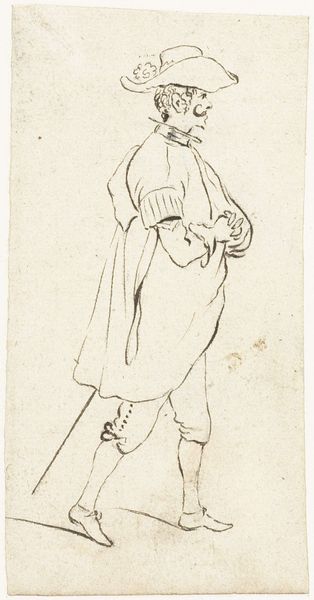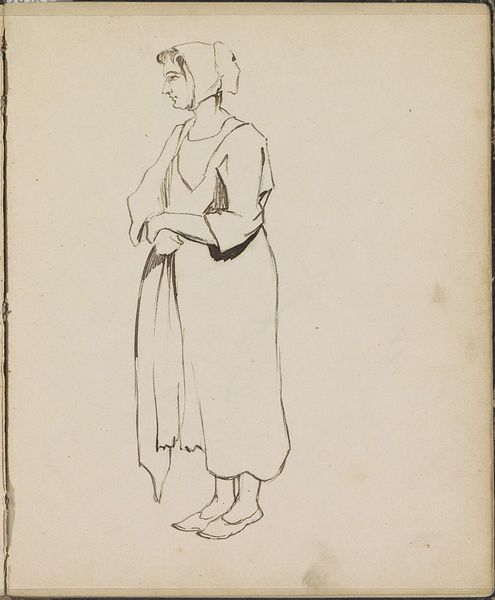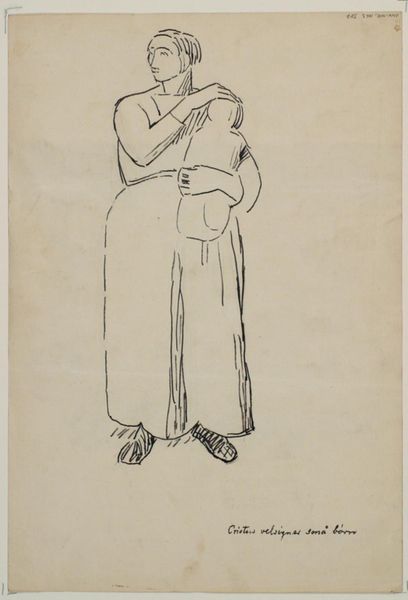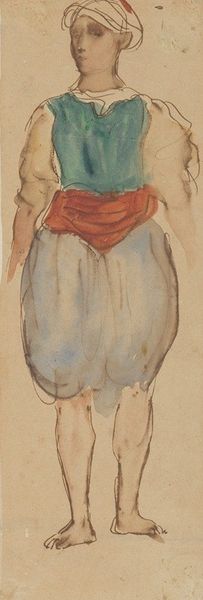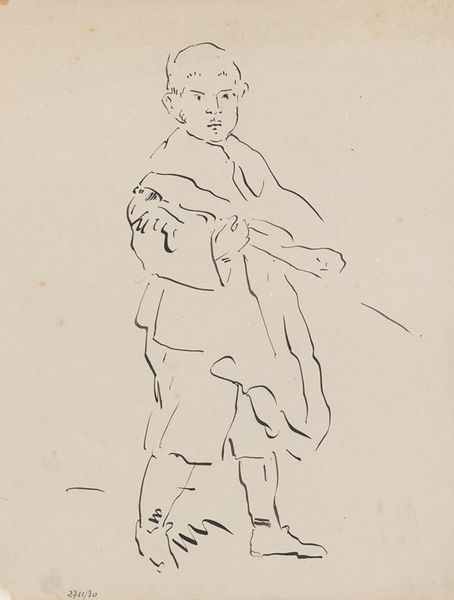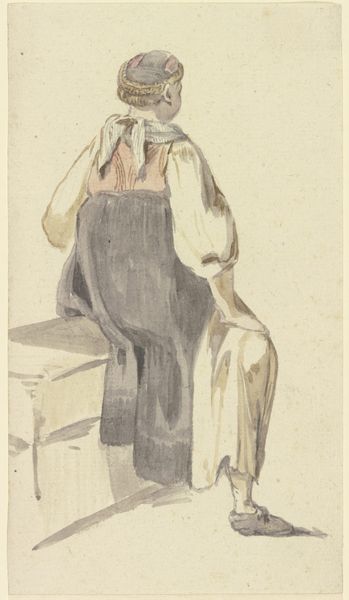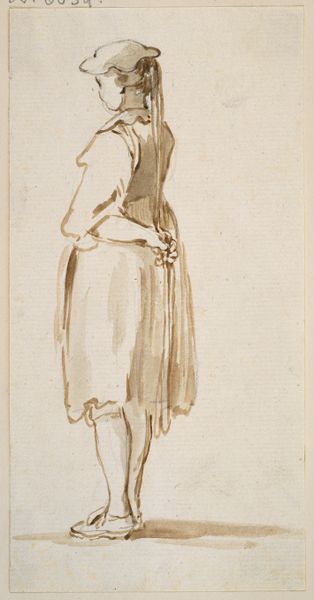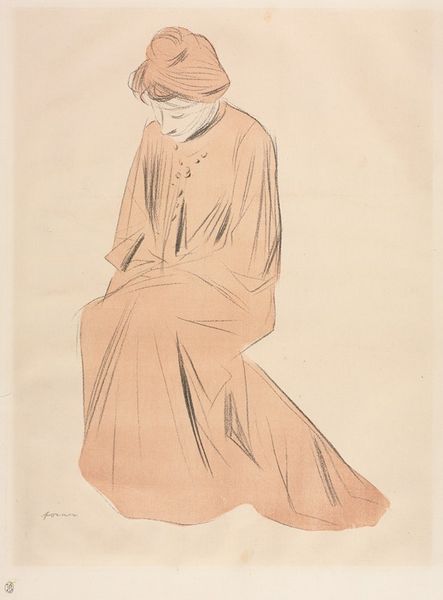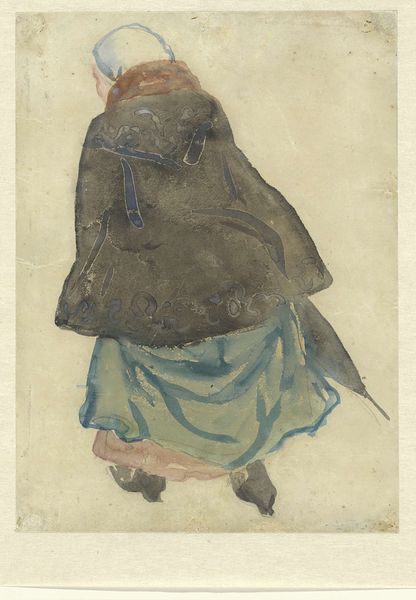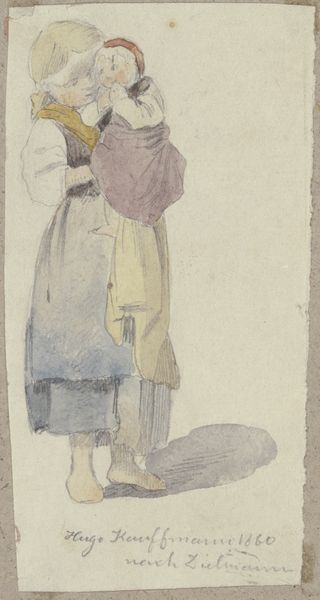
drawing, paper, watercolor, graphite
#
drawing
#
pencil sketch
#
landscape
#
figuration
#
paper
#
watercolor
#
pencil drawing
#
graphite
#
watercolour illustration
#
watercolor
#
realism
Dimensions: 18 1/8 x 12 7/8 in. (46 x 32.7 cm)
Copyright: No Copyright - United States
Curator: We're standing before Karl Rössing's watercolor, graphite, and pencil drawing, "In the Harvest Field," created in 1924. Editor: The figure seems so contained, almost austere. There's a quiet weariness expressed by the tilt of her head and the muted color palette, like the landscape itself has leached into her clothing. Curator: Indeed, her clothing carries specific connotations. The headscarf speaks to modesty and rural life, a near-universal symbol of women's roles tied to land and tradition. And look at the water jug that she lifts toward herself. It suggests a quenching, necessary for sustaining her work, symbolizing both physical survival and a deeper, perhaps spiritual nourishment. Editor: From a formal perspective, I'm drawn to how Rössing uses the limited washes of color to define form, contrasting soft blues and reds to describe the heavy fabric of her clothes, grounding her, but in a very ephemeral, airy manner. The sketchiness, too, leaves so much open to interpretation. Curator: Exactly, because the sketch’s openness draws us in. It suggests a universal experience of labor and sustenance rather than portraying this particular individual, but almost an archetypal form of feminine labor in agriculture, reaching back to classical depictions of Ceres. Editor: Yet, despite the overall tranquility, the positioning of her body on the canvas and even the color selection convey something akin to emotional thirst. She almost seems barricaded off from the rest of us, turned away as she ingests, isolated and closed off in a compositionally daring choice. Curator: I agree. She’s connected to a historical narrative of land and sustenance, echoing age-old artistic representations of the worker, but this positioning you noted highlights a personal experience too—one where her nourishment might feel more like a solitude rather than simple replenishment. Editor: Seeing how the simple color blocks establish mass makes this piece work! So much suggested, with the bare minimum executed. I'll carry the visual experience of that color simplicity with me. Curator: The way Rössing merges technique and symbolism definitely elevates this small, rather modest artwork into a really compelling meditation on labor and human need. It encourages a kind of contemplation of our past and shared origins.
Comments
No comments
Be the first to comment and join the conversation on the ultimate creative platform.

